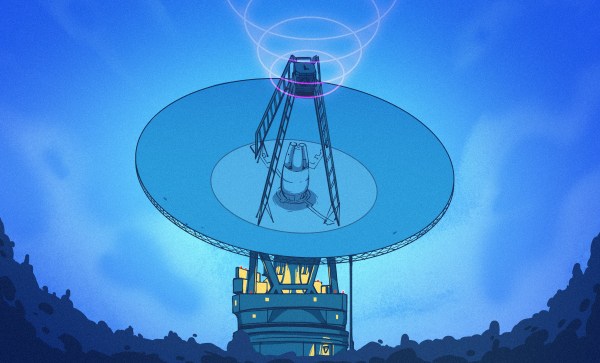Is it really a dystopian future if the robots are radio-controlled? That’s what came to mind reading this article on a police robot out of Singapore, complete with a breathless headline invoking Black Mirror, which is now apparently the standard by which all dystopias are to be judged. Granted, the episode with the robo-dogs was pretty terrifying, but it seems like the Singapore Police Force has a way to go before getting to that level. The bot, which has been fielded at Changi Airport after extensive testing and seems to be completely remote-controlled, is little more than a beefy telepresence robot. At 5.5 feet (1.7 meters) tall, the bot isn’t terribly imposing, although it apparently has a mast that can be jacked up another couple of feet, plus there are lights, sirens, and speakers that can get the message across. Plus cameras, of course; there are always cameras. The idea is to provide extra eyes to supplement foot patrols, plus the potential to cordon off an incident until meatspace officers arrive. The buzzword game here is weak, though; there’s no mention of AI or machine learning at all. We have a feeling that when the robots finally rise up, ones like this will be left serving the drinks.
Cassini3 Articles
The Deep Space Energy Crisis Could Soon Be Over
On the face of it, powering most spacecraft would appear to be a straightforward engineering problem. After all, with no clouds to obscure the sun, adorning a satellite with enough solar panels to supply its electrical needs seems like a no-brainer. Finding a way to support photovoltaic (PV) arrays of the proper size and making sure they’re properly oriented to maximize the amount of power harvested can be tricky, but having essentially unlimited energy streaming out from the sun greatly simplifies the overall problem.
Unfortunately, this really only holds for spacecraft operating relatively close to the sun. The tyranny of the inverse square law can’t be escaped, and out much beyond the orbit of Mars, the size that a PV array needs to be to capture useful amounts of the sun’s energy starts to make them prohibitive. That’s where radioisotope thermoelectric generators (RTGs) begin to make sense.
RTGs use the heat of decaying radioisotopes to generate electricity with thermocouples, and have powered spacecraft on missions to deep space for decades. Plutonium-238 has long been the fuel of choice for RTGs, but in the early 1990s, the Cold War-era stockpile of fuel was being depleted faster than it could be replenished. The lack of Pu-238 severely limited the number of deep space and planetary missions that NASA was able to support. Thankfully, recent developments at the Oak Ridge National Laboratory (ORNL) appear to have broken the bottleneck that had limited Pu-238 production. If it pays off, the deep space energy crisis may finally be over, and science far in the dark recesses of the solar system and beyond may be back on the table.
Continue reading “The Deep Space Energy Crisis Could Soon Be Over”
Serious DX: The Deep Space Network
Humanity has been a spacefaring species for barely sixty years now. In that brief time, we’ve fairly mastered the business of putting objects into orbit around the Earth, and done so with such gusto that a cloud of both useful and useless objects now surrounds us. Communicating with satellites in Earth orbit is almost trivial; your phone is probably listening to at least half a dozen geosynchronous GPS birds right now, and any ham radio operator can chat with the astronauts aboard the ISS with nothing more that a $30 handy-talkie and a homemade antenna.
But once our spacecraft get much beyond geosynchronous orbit, communications get a little dicier. The inverse square law and the limited power budget available to most interplanetary craft exact a toll on how much RF energy can be sent back home. And yet the science of these missions demands a reliable connection with enough bandwidth to both control the spacecraft and to retrieve its precious cargo of data. That requires a powerful radio network with some mighty big ears, but as we’ll see, NASA isn’t the only one listening to what’s happening out in deep space. Continue reading “Serious DX: The Deep Space Network”














